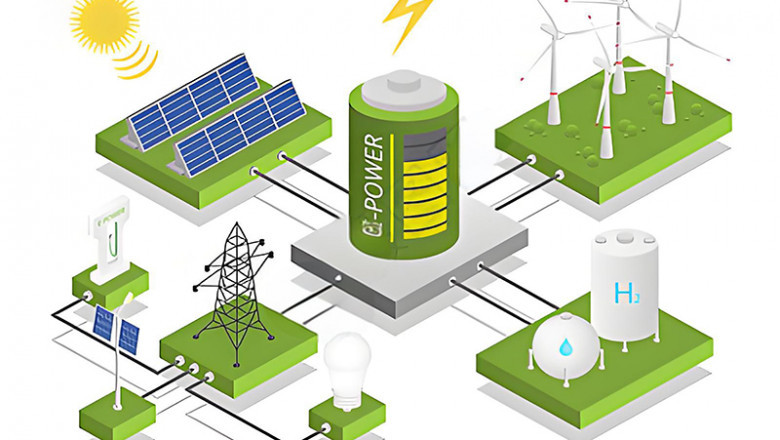views
Hybrid renewable energy systems (HRES)—which combine sources like solar, wind, and batteries (often with backup generators)—significantly improve grid stability in remote areas in the following ways:
In many remote regions, especially in countries like India, getting reliable electricity is still a major challenge. Building long power lines through forests, mountains, or rural areas is expensive, time-consuming, and often impractical. That’s where hybrid renewable energy systems come in.
These systems combine two or more sources of energy, like solar power, wind power, batteries, and sometimes diesel generators, to create a more dependable, steady, and clean source of electricity.
1. Power All Day and Night
Solar panels work when the sun is shining, and wind turbines generate electricity when the wind is blowing. But neither works 24/7 on their own. By combining these sources—and adding batteries to store any extra energy produced during the day—hybrid systems make sure electricity is available even during the night or cloudy, windless days. This means no dark evenings or power interruptions in remote homes, schools, or clinics.
2. Less Downtime, More Reliability
One of the biggest problems with renewable energy is that it's dependent on nature. If it's cloudy or not windy, power generation drops. But in a hybrid system, if one source isn’t producing energy, another can step in. For example, if solar generation is low, wind or batteries can take over. This constant switching between sources keeps the electricity flowing smoothly, with fewer interruptions and more consistent performance.
3. Stable and Smooth Energy Output
Renewable energy often fluctuates—sunlight intensity can change, and wind can be gusty. These ups and downs can cause problems for appliances and equipment. Hybrid systems are designed with smart control systems and batteries that absorb these fluctuations and deliver a smooth, steady flow of electricity. This protects devices and makes the system more dependable for everyday use.
4. Lower Fuel Costs and Cleaner Energy
Many remote areas still rely on diesel generators as their main power source. But diesel is costly to transport, expensive to run, and bad for the environment. Hybrid systems reduce the need for diesel by replacing it with renewable sources. Even if a generator is still used as a backup, fuel consumption is much lower—saving money, reducing pollution, and creating a greener energy setup.
5. Perfect for Local Mini-Grids
In places far from the national power grid, hybrid systems can power mini-grids—small local electricity networks that serve villages, farms, or isolated communities. These mini-grids are self-sufficient, easy to manage, and can grow as the community’s energy needs grow. This makes them a smart and flexible solution for rural development.
Who's Helping Make This Happen?
SgurrEnergy is one of the key players supporting hybrid energy systems in India and beyond. They’re a top-tier renewable energy engineering company with over 20 years of experience in solar, wind, and hybrid power.
SgurrEnergy helps at every stage—from early site surveys and feasibility studies to full-scale design, engineering, and project management. They’ve worked on everything from massive solar farms to off-grid village systems, always focused on clean, efficient, and stable power solutions.
Their work helps ensure that even the most remote areas can access reliable electricity, improving lives, boosting local economies, and protecting the environment.






















Comments
0 comment